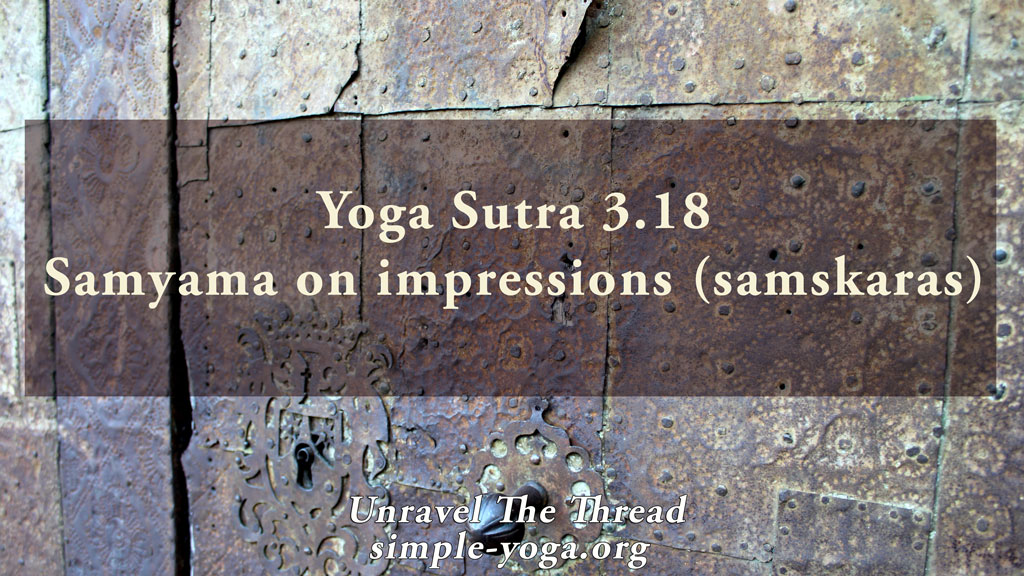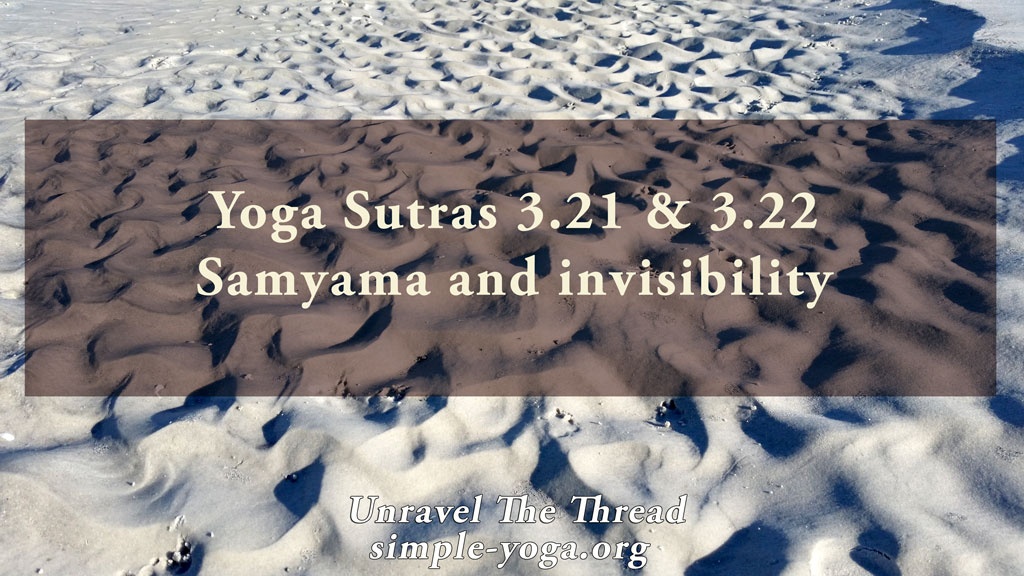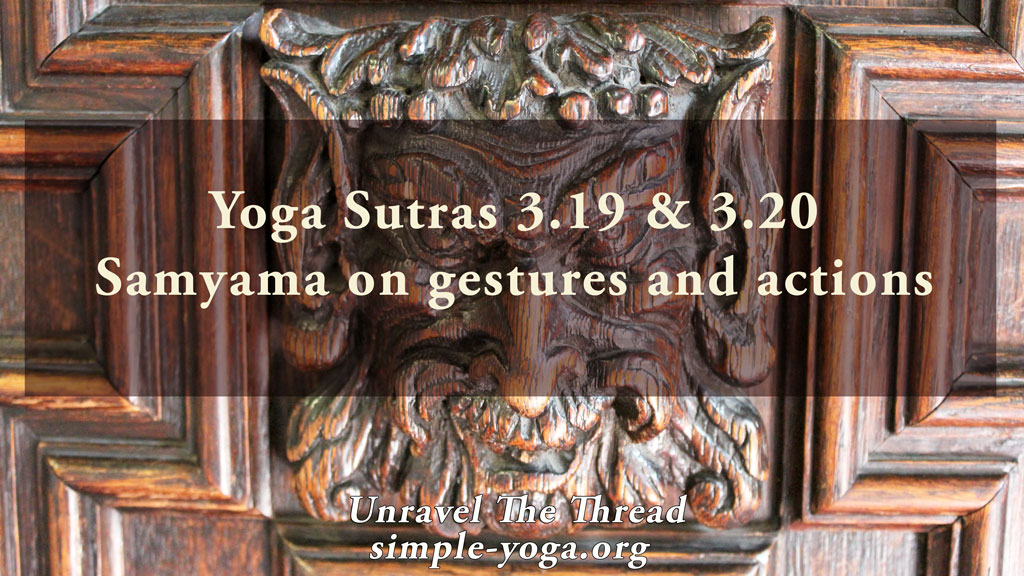
3.18 Samyama on impressions (samskaras)
September 12, 2021
3.21 and 3.22 Samyama and invisibility
September 25, 2021
3.18 Samyama on impressions (samskaras)
September 12, 2021
3.21 and 3.22 Samyama and invisibility
September 25, 20213.19 and 3.20 Samyama on gestures and actions

3.19 Meditative integration (samyama) on somebody’s gestures, actions and demeanor indicates his/her state of mind.
3.20. However, the cause of that state of mind is not revealed.
Meditative integration is a high state of receptivity enabling you to apprehend information instantaneously through intuition. This heightened perception is directed toward a specific focal object. This is one reason samyama is thought of as integration with seed (sabija samadhi), because the focal object is the seed around which your awareness gravitates. This perceptivity is cultivated through time. It is like the gradual development of NASA’s Deep Space Network over decades to become an international array of powerful radio antennas capable of sending and receiving information to and from distant spacecraft like Voyager I and Voyager II for over four decades. By adjusting the Deep Space Network over time, NASA is still capable of communicating with these spacecrafts travelling beyond our solar system, even though capturing their signals is like seeing a refrigerator light bulb that is more than sixteen billion kilometers away. The focal point for these two sutras is the demeanor, gestures, and actions of a person. It stands to reason that paying close attention to a person may give you a fair indication of that person’s state of mind. The more acute your concentration and perception, the more likely it is that you can learn something about the person you are directing your attention to.
Aphorism 3.20 clarifies that since the focal object of samyama is the external features of the person observed, his or her state of mind would be revealed but the cause of that state of mind would not be known because the cause is not the focal point. Even without applying samyama you can make some inferences about a person by observing gestures, actions, and demeanor attentively. Observing a person with sustained focus is a viable stepping stone towards practicing the technique in this sutra. What do you find when you try it?
To what extent are your inferences accurate or inaccurate? To what extent are you distracted by your own thoughts and unrelated ideas? Are your opinions of this person helpful or unhelpful in ascertaining their state of mind? Since samyama is a technique that goes beyond the mental processes of inference and testimony, what happens if you focus on the person while remaining centered and completely calm? Whatever you perceive, it may be interesting to investigate if the information you receive provides a hint or invitation for mindful, compassionate and life affirming actions on your part.
As usual, one more way of exploring the meaning of these sutras is by chanting them.
For sutra 3.19 with some words together
3.19 pratyayasya paracittajñānam
प्रत्ययस्य परचित्तज्ञानम् ॥१९॥
or to chant each word individually,
- pratyayasya
- para
- citta
- jñānam
For sutra 3.20 with some words together
3.20 na ca tat sālambanaṃ tasyāviṣayī bhūtatvāt
न च तत् सालम्बनं तस्याविषयी भूतत्वात् ॥२०॥
or to chant each word individually
- na
- ca
- tat
- sālambanaṃ
- tasya
- aviṣayī
- bhūtatvāt
If you prefer, you may listen to the podcast:
This post is an excerpt from the book Unravel the thread: Applying the ancient wisdom of yoga to live a happy life
If you find Simple-Yoga.org and Unravel the thread useful, consider supporting my labor with a donation, you may also donate using PayPal or Venmo. Thank you!
